
decomposition

I made a "resumé" that covers what I then considered to be my most important work from 1969 to 1980. The predeccesor to this, "Dead Man with a Horn", is listed as having been decomposed in 1974 but "decomposition" isn't listed. I'm deducing it was decomposed in 1975. I vaguely recall that I was trying to go past "Dead Man with a Horn" & to make it more 'pure' & 'abstract' - i.e.: to concentrate on the "decomposing" & to rid it of the referential aspects of the libretto of "Dead Man with a Horn". I never finished it. One could say that I was "in over my head". I deduce that its unfinished nature is why I didn't list it in my resumé. Then again, "Dead Man with a Horn" is also unfinished & I DID list that.. so, what gives?! Now, 44+ years later, as I attempt to understand the score & as I write this, I find it worthy & interesting enough to consider performing it, as is, with a minimum of practical clarifying rather than wholesale upgrading.
To say that this is poorly notated &/or incoherent is probably fair enough. I had had piano lessons from roughly ages 6 to 9 (or 10?) & I must've learned elementary notation then. I was considered a "Music Major" at the community college I attended for 3 & 1/2 semesters (I dropped out) because I took a Music History class & a Music Theory class. In the latter, I impressed my professor because when given an assignment to compose a short piece with a suspension in it my suspension was a tritone. That reminded the professor of her favorite composer, Bartok. I'd also taught myself independent of school.
Nonetheless, when it came time to decompose this, I did all sorts of strange things (aside from the obviously deliberate innovations) that're either definitely mistakes or 'incorrect' things done for reasons I no longer remember. The most glaring of these is the notating of the accidentals after the note rather than before. I notated it as if one were saying the note name rather than using conventional placement. If I were to renotate this I wouldn't do that again.
Making things more complicated &/or confusing to this day are what are intended to be accent marks. The Marcato (Italian for "well marked"), what I tend to think of as 'the hat' (en Français, le petit chapeau - the little hat) or 'the roof', an inverted "V" (a vertical wedge) over a note indicates that it's to be played somewhat louder or more forcibly than a note with a regular accent. Fine - but what about a Marcato combined with a presumed Tenuto, the horizontal line over the note? I don't think these notations are usually combined so my use of them will be deduced to mean play a note slightly longer than its full value somewhat louder or more forcibly than a note with a regular accent. HOWEVER, looking at the "Dead Man with a Horn" score that this is a direct outgroth of, I see that there's a key that identifies the Marcato as a "big accent" & the Marcato with a line over it as a "little accent". So be it.
Then there's what appears to be a Double Marcato, another hybrid notation that I seem to've 'invented': it could mean increasing the note volume in 2 ways: manually (with a hard pluck, e.g.) + electronically (turning the volume all the way up). Whether I was thinking this through very thoroughly is unknown to me.
I haven't found what I'm calling the Marcado/Tenudo or the Double Marcado in lists of musical notation online or in a music book consulted or in a music notation template that I have. Nonetheless, I'm fairly sure that I didn't really just invent those, I must've learned them somewhere.
Making matters even 'worse' is that I put accent marks over rests. I was obviously aware that I was doing this .. but why? Each of the guitar parts is marked as a 'decadent' (decomposing) 'dance': a "TWIST", a "CHARLESTON", a "TANGO", & a "STRIP TEASE". Perhaps these accents are meant to indicate the underlying dance beats even if these beats can't be heard.

Looking at the 1st page of the score that makes the 'Twist'
01: Marcato/Tenuto
02: unaccented
03: unaccented
04: Marcato/Tenuto
05: Marcato/Tenuto
06: unaccented
07: unaccented
08: unaccented
09: Double Marcato
10: unaccented
11: unaccented
12: unaccented
13: Marcato
14: unaccented
15: unaccented
16: unaccented
17: Marcato
18: unaccented
19: unaccented
20: unaccented
Somehow, I don't think that such an erratic rhythm would be condusive to twisting - so what gives?! Is there Morse Code happening? Yes, there is, no doubt inspired by Lukas Foss's "Baroque Variations".
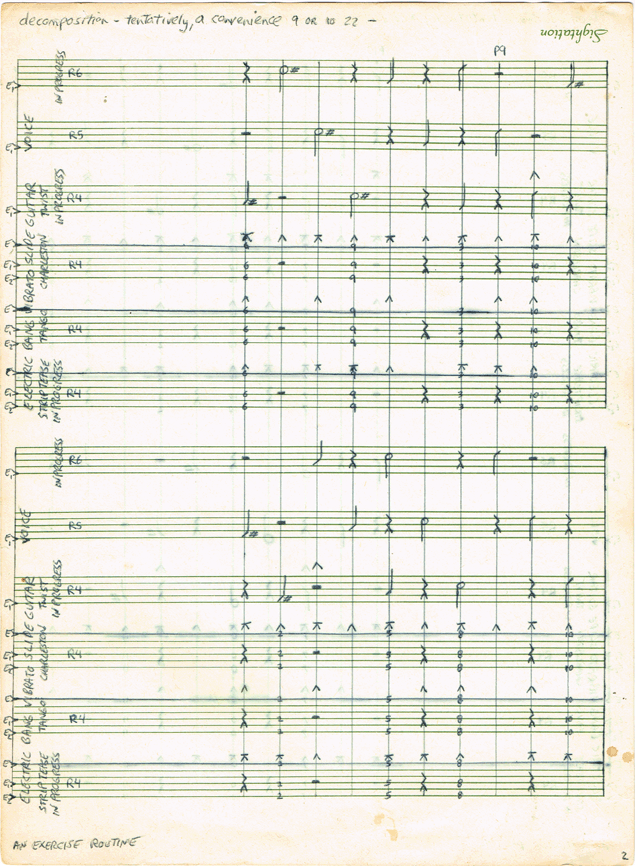
I'm criticizing my notation but at the same time I know that I was attempting to accomplish fairly new things & that I did manage to put those in there. The "base score" is 13 pages. Each page is numbered in the bottom right. The top left says: "decomposition - tentatively, a convenience 9 or 10 22 -" "decomposition" is, of course, the name of the piece. "tentatively, a convenience" is the decomposer's name, the name is all lower case because at the time it was meant to be slipped into other texts without its immediately being obvious as a name. I didn't start using tOGGLE cASE, "tENTATIVELY, a cONVENIENCE" until 1979, 4 years after this was decomposed. "9 or 10 22" is the date. I was experimenting with creating dating systems. This probably means something like "in the 9th or 10th month of my 22nd year". I turned 22 on September 4, 1975. Therefore, this could mean that I decomposed this in September or October of 1975 OR it could mean that I decomposed this in May or June of 1976. I think the earlier date is more likely - partially because I'm fairly sure I created it not long after "Dead Man with a Horn".
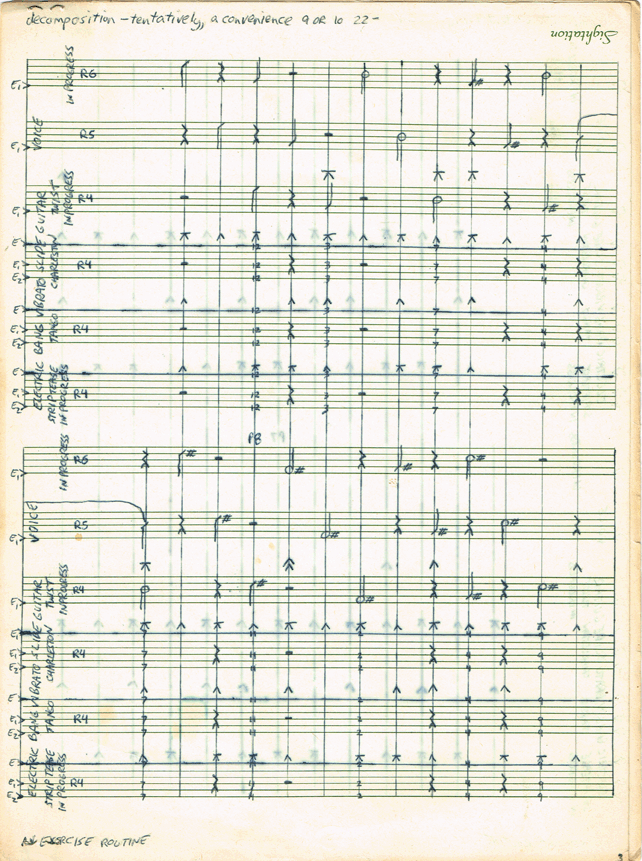
There's no bracket or brace to connect the 6 sets of staves but this is delineated simply enough by a vertical line along the left edge. I had used a brace to group together the guitar parts in "Dead Man with a Horn" earlier so I may've decided that it was unnecessary. The top 3 staves consist of 5 lines each, the bottom 3 have 6 lines & are intended as guitar tablature. There are no clef markings to indicate this. I would've been aware of treble & bass clefs at the time & probably even the alto clef since I learned about that from John Cage's "Dream" which I might've already bought the score to by then. So why are there no clefs?!
Instead, I mark the lowest staff lines with Esub1. If one feels the need for a clef for comprehensibility, one would use an Octbve Clef - in this instance a Treble Clef with an "8" under it.
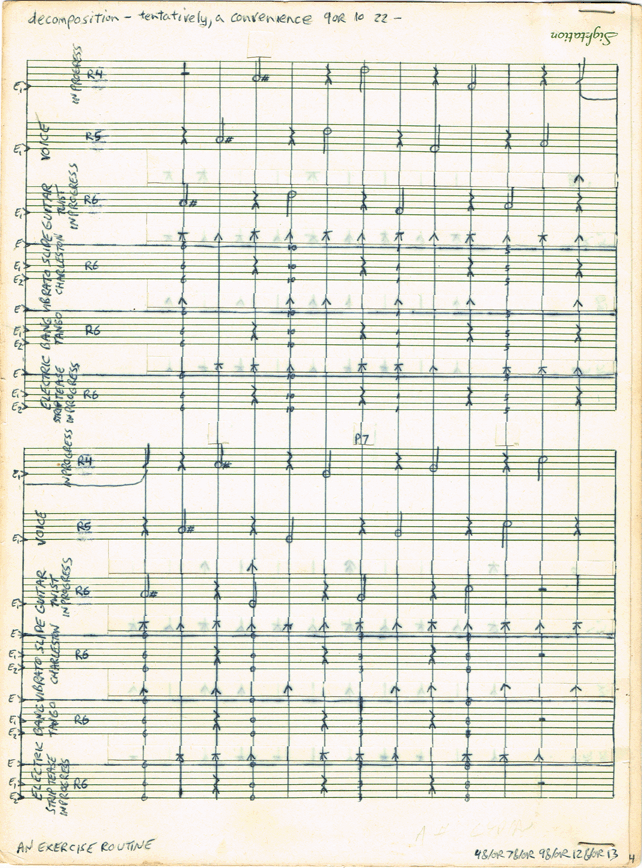
There're no measure lines. Instead there're vertical lines that function as regular beat markers. All notes are placed on these lines. There're no tempo markings but it's written in notes that the piece's duration is 6:30. Since there're 13 pages, that makes each page approximately :30 long. Given the sparseness of what I'll call "beat lines" that makes the tempo slow. E.G.: page 1 only has 20 beats. That makes each beat 1.5 seconds long.
That, however, isn't correct because the average number of beats per page isn't 20.
page 01 has 20 beats
page 02 has 20 beats
page 03 has 25 beats
page 04 has 25 beats

page 05 has 22 beats
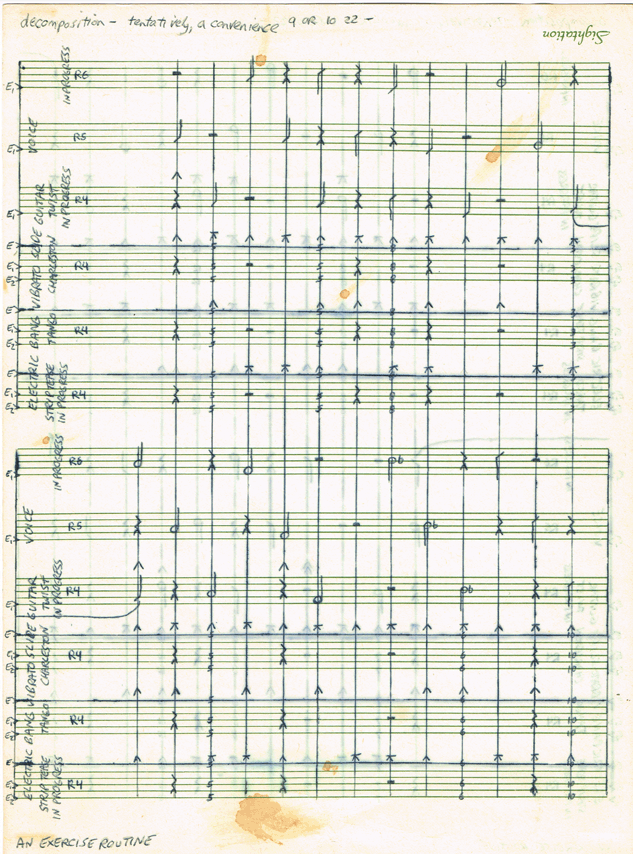
page 06 has 25 beats
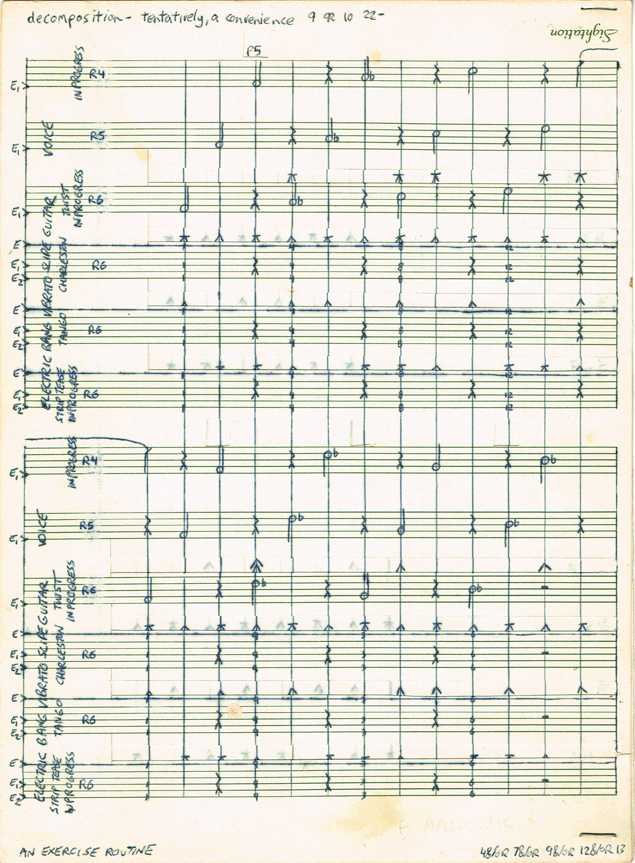
page 07 has 25 beats
page 08 has 19 beats
page 09 has 25 beats
page 10 has 24 beats
page 11 has 27 beats
page 12 has 25 beats
page 13 has 25 beats
20 + 20 + 25 + 25 + 22 + 25 + 25 + 19 + 25 + 24 + 27 + 25 + 25 = 307 beats TOTAL
It's probably hard, even for me, to resist the temptation to find much of this to be 'random' - but knowing myself as I do, & knowing how meticulous I was in the writing that I was doing at the time, there's probably an intricate schema at work here that I'm not remembering, some hidden meaning. I was still very close in age to my roots as a child mathematician.
At any rate, with 307 beats occurring over 390 seconds, that makes 1.270358306189 seconds per beat. I doubt that there's any good reason for the beat duration to involve such a long decimal statement so I think that 1.25 (1 & 1/4) seconds is probably fine. That would make 6 minutes & 21 & 1/4 seconds total duration. It's probable that the 6:30 duration was an estimate or a rounding off.
Since each beat is a quarter-note long, that makes the tempo 48 beats per minute. That puts the piece in the Largo tempo range (broadly - 40 to 60 BPM). It seems probable to me that I chose that tempo because I had heard Charles Ives's "Largo" (from the "Pre-First Sonata" (ca 1901)) as played by Louis Zukofsky & Gilbert Kalish in early 1975 & loved it. The robustness of Zukovsky's tone had particularly impressed me & seemed extremely appropriate for the piece.
HOWEVER, after having looked further at the "Dead Man with a Horn" score, I realize that the tempo chosen was 40BPM Largo that was simply the slowest tempo on my Seiko metronome that I was planning to use to mark off the beats in "Dead Man with a Horn". That means that 307 beats, at 40 beats per minute, makes the duration of "decomposition" 7:39. Even though this differs from the original 6:30 I think it's probably correct. I think the reason why I estimated the duration of this at 6:30 because it has fewer beats than "Dead Man with a Horn" which I'd estimated to be 7:00 long. The correct time for "Dead Man with a Horn" is 8:20.
The 6 parts are for "IN PROGRESS", "VOICE", "ELECTRIC BANG VIBRATO SLIDE GUITAR TWIST IN PROGRESS", "ELECTRIC BANG VIBRATO SLIDE GUITAR CHARLESTON","ELECTRIC BANG VIBRATO SLIDE GUITAR TANGO", & "ELECTRIC BANG VIBRATO SLIDE GUITAR STRIP TEASE IN PROGRESS".
I deduce that the "IN PROGRESS" parts were considered to be UNFINISHED at the time I abandoned the piece. That might mean that I wanted 6 instruments but hadn't decided which instrument the top stave would be for yet. Now, I 'resolve' in the obvious way by saying that any instrument is fine that can play in the treble clef range from E4 (the E above Middle C) to E5. Given that all of the pitches in that chromatic range appear, that makes 13 pitches. That's such a narrow range that many instruments could play the part. The pitches for the "IN PROGRESS" part appear in this order (excluding repeating pitches):
B4, D5, F#4, A4, E4, G#4, A#4, C#5, G4, C5, E5, D#5, F4, Bb4, Ab4, Db5
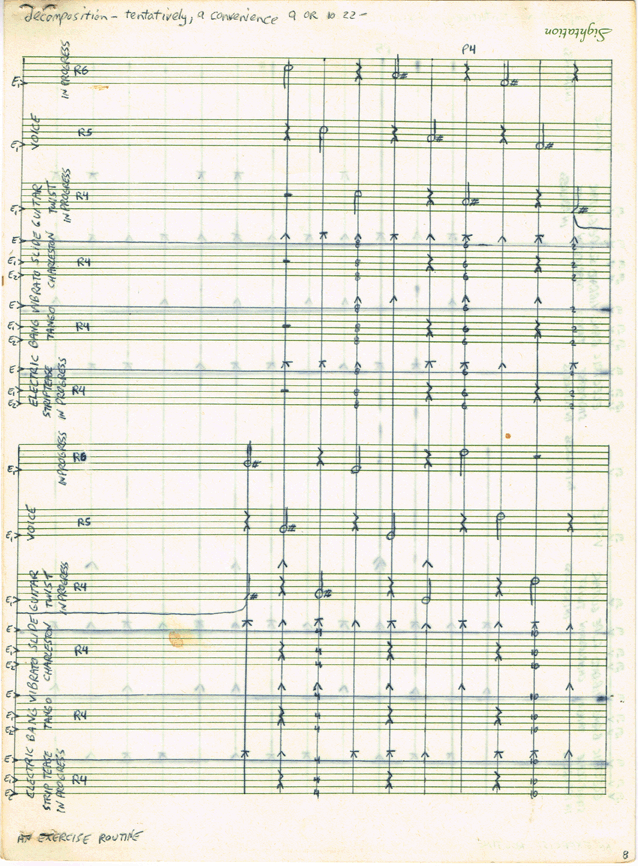
More questions arise: Why did I start using flats instead of sharps on page 6 & then go back to sharps on page 8? Since there're also flats on at least one overlay page that means that there could be a flat as early as page 4. Given that I would've been at least partially aware of microtonality at the time, one could interpret this as meaning that A#4 & Bb4 are not intended to be the same pitch & THAT THE SAME THING APPLIES to G#4 & Ab4 as well as C#5 & Db5. The implication for me is that F#4, & D#5 are equal-tempered but that G#4, Ab4, A#4, Bb4, C#5, & Db5 are all microtonally short of their equal-tempered pitch. I leave the degree of this to the performer to choose.
There're also flats used in "Dead Man with a Horn". Since that piece uses scales, I thought the flats might've just carried over into "decomposition" from those scales. However, that doesn't seem to be the case.
Another, perhaps strange, implication here is that the "CHARLESTON" & the "TANGO" are accurate since they're not marked as "IN PROGRESS". It may just mean that they're acceptable as decadent dances, something I can imagine myself thinking, but that the 'TWIST" & "STRIP TEASE" are under consideration as such.
Looking at the 1st page of the score that makes the 'Charleston'
01: Marcato/Tenuto
02: Marcato
03: Marcato/Tenuto
04: Marcato
05: Marcato/Tenuto
06: Marcato
07: Marcato/Tenuto
08: Marcato
09: Marcato/Tenuto
10: Marcato
11: Marcato/Tenuto
12: Marcato
13: Marcato/Tenuto
14: Marcato
15: Marcato/Tenuto
16: Marcato
17: Marcato/Tenuto
18: Marcato
19: Marcato/Tenuto
20: Marcato
Note that there's an even alternation between Marcato/Tenuto & Marcato - which means that this could be said to be in 2/4 time. However, a Charleston is in quick 4/4 time with syncopated rhythms so the above doesn't appear to qualify. What about the Tango?
Looking at the 1st page of the score that makes the 'Tango'
01: Marcato
02: unaccented
03: unaccented
04: Marcato
05: Marcato
06: unaccented
07: Marcato
08: unaccented
09: Marcato
10: unaccented
11: unaccented
12: Marcato
13: Marcato
14: unaccented
15: Marcato
16: unaccented
17: Marcato
18: unaccented
19: unaccented
20: Marcato
If I were to represent the above with "1"s as accents & "0"s as no-accents then I'd have this:
1, 0, 0, 1, 1, 0, 1, 0, 1, 0, 0, 1, 1, 0, 1, 0, 1, 0, 0, 1
Looking to the next page I see that the 1st beat place is accented so the above can be written out in its 1st 21 places as:
1, 0, 0, 1, 1, 0, 1, 0, 1, 0, 0, 1, 1, 0, 1, 0, 1, 0, 0, 1, 1
That does give us a regular irregular rhythm. There are apparently 3 Tango rhythms: Tango, Vals, & Milonga. It seems doubtful to me that I would've known that in 1975. Let's say that a Tango is a syncopated asymetrical rhythm like this: 3+3+2 - could the above be analyzed to work that way? Weeelllllll, maybe. If I add more from page 2 & introduce semi-colons (& color) we could parse it thusly:
1, 0, 0; 1, 1, 0; 1, 0; 1, 0, 0; 1, 1, 0; 1, 0; 1, 0, 0, 1, 1, 0, 1, 0;
Voila! This could be construed as a Tango! Again, though, the presence of rests where there would be sounded notes in an actual Tango would subvert that. Furthermore, the typewritten notes say that the Twist & the Charleston should be "mislabeled" & there's a check next to that showing that I've done so. These notes also say that the Tango & the Strip Tease should be listed as "IN PROGRESS". Instead the Twist is listed as IN PROGRESS. Could this mean that the Tango & the Twist are somehow intentionally switched?

These same typewritten notes say that "the act process or result of decomposing tango, twist, charleston, strip tease decadent beyond recognition due to rhythmic imposition of international morse code". So what does the Morse Code say? I haven't tried to decode that yet.
On the lower left of all the score pages it's written "An Exercise Routine". That seems to be clearly an example of my humor since I'm not an enthusiast for exercise routines & since the dances are too subverted to serve as such. Hence, the word "routine" might refer more to an entertainment schtick rather than to a repetitive procedure.
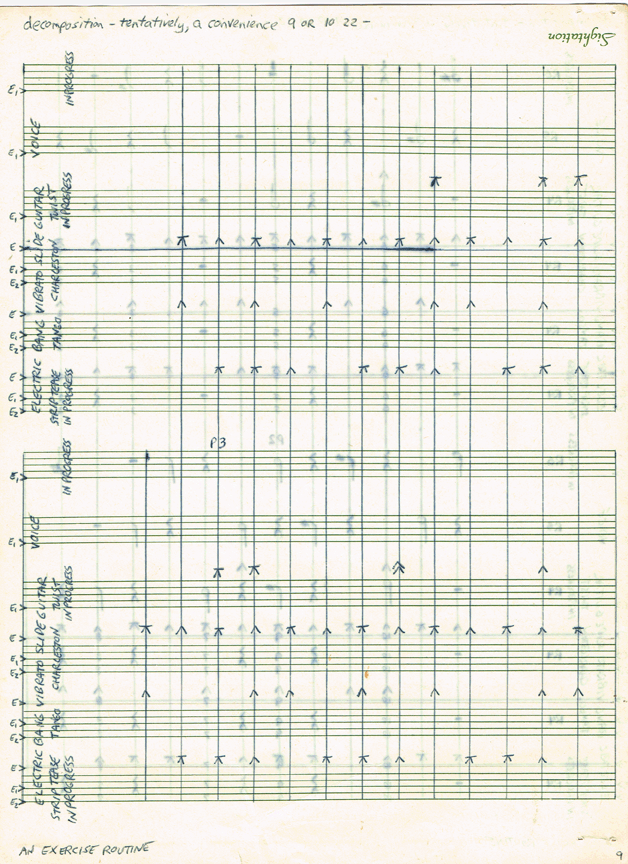
The base score pages have notes on them except for the ones that are meant to be covered with overlays: pages 4, 7, 9, 12, & 13. These pages have accents & "P" numbers only (i.e.: they're without pitches). P = Playback & these occur as periodic markings in a countdown. Therefore, "P10" (maximum playback volume) appears on the 1st vertical line, "P9" occurs on line 28, P8 on 56, P7 on 84, P6 on 112, P5 on 140, P4 on 168, P3 on 196, P2 on 224, P1 on 252, P0 on 280.
That means that there's this progression:
Start on maximum volume, lower volume 1 marking at the 28th beat, lower it again at 28 beats later, again 28 beats later, again 28 beats later, again 28 beats later, again 28 beats later, again 28 beats later, again 28 beats later, again 28 beats later, finally 28 beats later.
There are then 28 beats of sound turned off. But what do these Playback numbers mean?
Each part has an "R" number at the left of the page. The "R" stands for "Record" just as the "P" stands for "Playback". On page 1, the "R" numbers are:
IN PROGRESS = R6
VOICE = R5
ALL ELECTRIC BANG VIBRATO SLIDE GUITAR = R4
This stays the same for pages 2 & 3 but the overlays change pages 4, 7, 9, 12, & 13 to:
IN PROGRESS = R4
VOICE = R5
ALL ELECTRIC BANG VIBRATO SLIDE GUITAR = R6
- thusly emphasizing the guitars over the unspecified instrument. Pages 5, 6, 8, 10, & 11 then revert to the initial setting.
This seems to encourage a record/playback realization for pre-recorded performance. Such a thing was no doubt inspired by the Nonesuch record of John Cage & Lejaren Hiller's "HPSCHD" because each record came with a unique computer print-out score for the person operating the record player to follow in order to make their playing of the record one-of-a-kind.
For "decomposition" it isn't actually necessary to follow the instructions live given that the recording can be altered to meet the requirements. A way to not have the last 28 beats be silent would be to record all the parts line in & to record the last 28 beats with a microphone but only have the players make the motions rather than to play audible pitches - ambient sound would be heard.
All in all, the piece is somewhat sparse given that notes are only played on the beat lines & that there are many rests. Also, the guitar parts are always in unison. Such austerity might obliquely remind one of Erik Satie's 'Rosicrucian Era', which I would've known about at the time, but, even though I love Satie's music, I can't honestly say he was an influence here.
Perhaps more relevant would be Minimalism, which I would've at least heard an example of in Steve Reich's "Four Organs". Also relevant would've been the transparencies that Cage used for"Fontana Mix". Even though I used multiple guitars, that wouldn't've been inspired by Glenn Branca because I wouldn't've known his music yet.
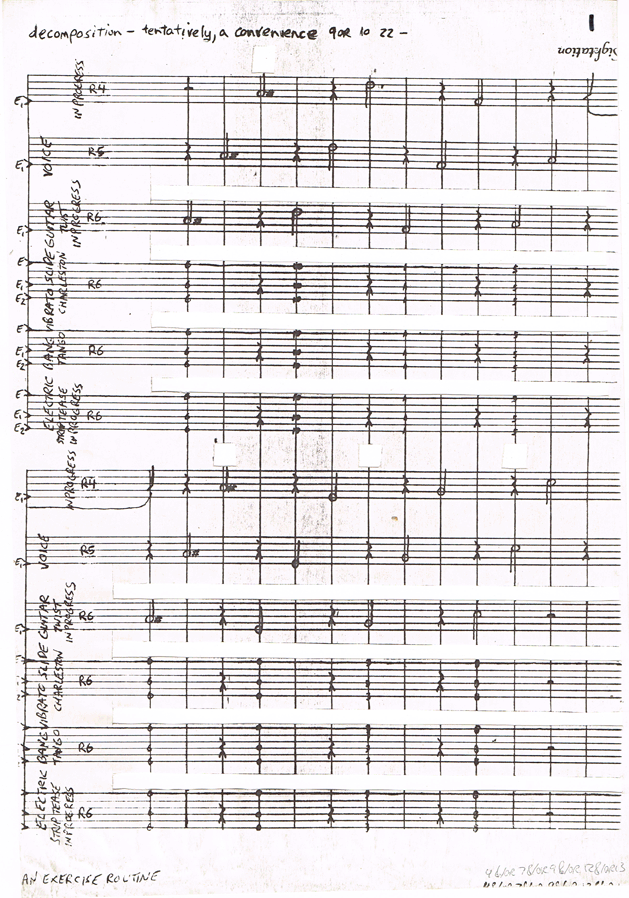
Cage's transparencies brings us to the overlays for "decomposition". There are 5 possible overlays, numbered simply in marker (an addition made August 23, 2019 to try to clarify things) as 1 through 5 in the upper right corner. The possible permutations of how these can be overlaid result in 3,125 possibilities (5 to the power of 5). To calculate this, I systematically typed the possible variations in 25 rows of & 5 columns of 5 on 25 pages. Of course. just calculating 5 to the power of 5 would've yielded the correct number but this way I have a list of the possible versions. With that list I can strike-through (preferably with pencil) each version performed.

In order for the overlays to leave showing the "P" numbers & the accents I had to hand-cut-out with an exacto knife & a straight-edge 8 rectangles & 4 squares on all of them. That's 12 cut-outs per page.
There are the 5 originals + 20 that I assume to be back-ups + 6 sets of 25 pages each for the players. That's 175 X 12 = 2100 shapes that had to be cut out by hand. Imagining that combined with the typing of the possible versions can give you an idea of the lengths that I went to to create this score physically.
ALSO, keep in mind that this was 1975. The era of copy shops was not upon the area that I lived in yet. Public copying was mainly done with offset printing, which usually involved large quantities. Given that music notation paper isn't the common 8&1/2 X 11" paper (known as "typewriter paper") that makes copying even harder. Somehow, I managed to make copies on paper that's 8&1/2X12&1/4". The paper has a slightly glossy texture so it might've been mimeograph paper. I have no idea how I pulled that off.

Relevant to the VOICE part, a hand-written note says: "Notate a talk technique". That doesn't appear to've been done so the VOICE part would seem to also be IN PROGRESS even though it's not marked as such. Apparently, I was undecided about whether to have words for the VOICE to enunciate. At this point, I think the VOICE should just sing in a way as non-referential as possible.
The VOICE echoes the IN PROGRESS part, delayed by one beat, & the GUITAR echoes the VOICE by the same amount. THIS PROCESS IS REVERSED ON THE OVERLAY PAGES. I admit to finding this fascinating.
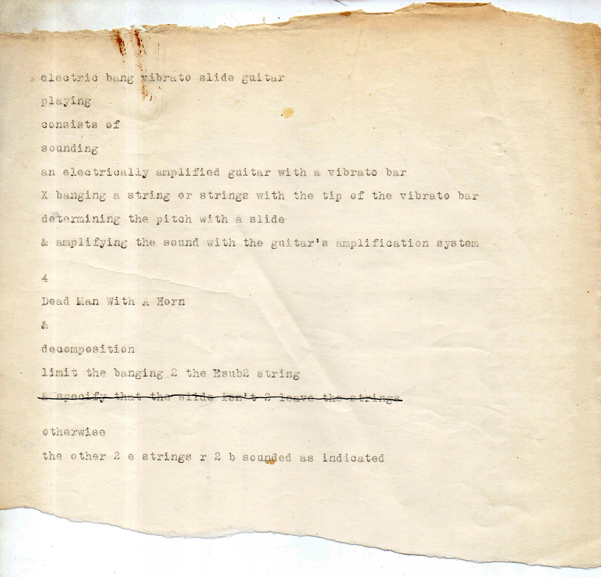
As for "electric bang vibrato slide guitar"?: As the typewritten notes explain: "electric bang vibrato slide guitar playing consists of sounding an electrically amplified guitar with a vibrato bar [by] banging a string or strings with the tip of the vibrato bar determining the pitch with a slide" [..] "Dead Man With A Horn & decomposition limit the banging [to] the Esub2 string [the lowest E string] otherwise the other 2 e strings [are to be] sounded as indicated".
Looking at the notation to the left one can see that I marked the "D" string 'Esub1'. Therefore, I must've intended for the "D" string to be tuned up one whole step so that it would be the "E" between the low "E" string & the high one.
Alas, there are no further attack instructions so, once again in the interest of minimal interference with this original score, I specify that the other notes should be finger-picked.
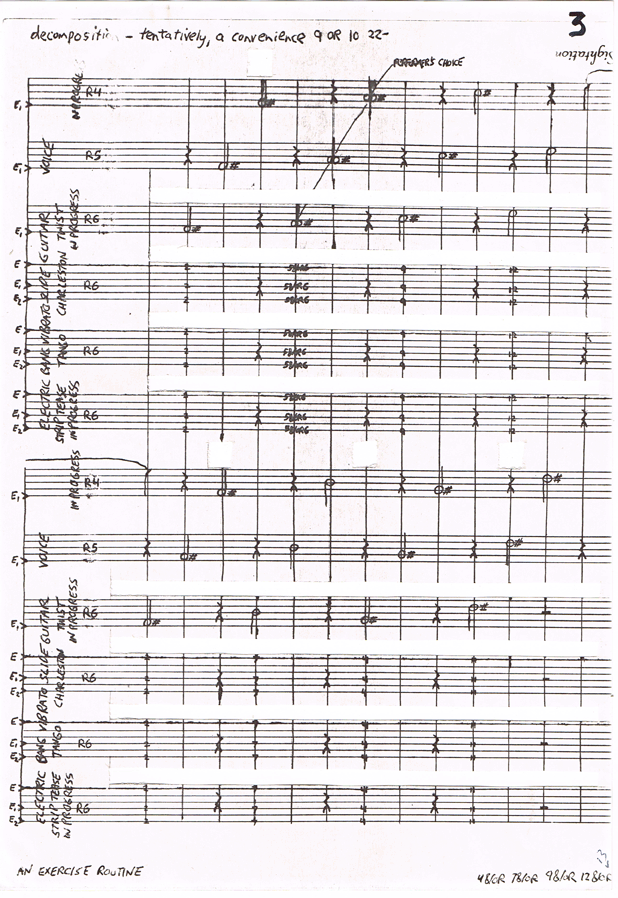
In keeping with more or less every piece I've ever created, #3 of the overlays has one small section where the players have a choice between 2 pitches (A4 or A#4 in the upper 3 staves) & between pitches to be used in the slide guitar chords (A or A# (frets 5 or 6) on the high E string + A or A# (frets 5 & 6) on the D string that's been tuned up to E + A or A# (frets 5 or 6) on the low E string. Since the notation says "5&/or6" it leaves the possibility open to play, e.g., A on the low E + A# on the middle E + A on the high E. That would require using both the slide & finger-fretting or abandoning the slide for the moment altogether & making a bar chord.
The typewritten notes seem to provide a harmonic philosophy: "western harmonic orientation is expanding away from unison the expansion can be [facillitated] if every harmonic progression is an active repulsion by the parts to [separate] into constituent parts or elements to decay; putrify".
- August 24, 2019, explanatory notes from tENTATIVELY, a cONVENIENCE


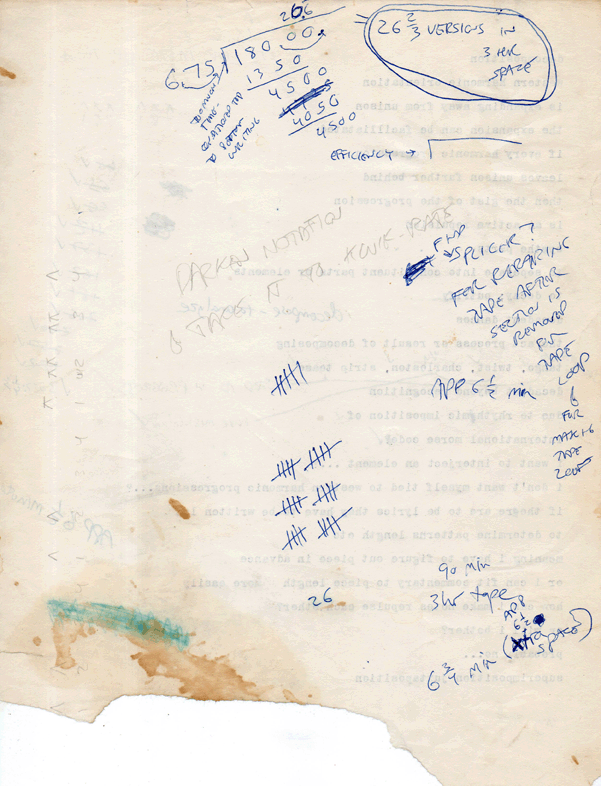




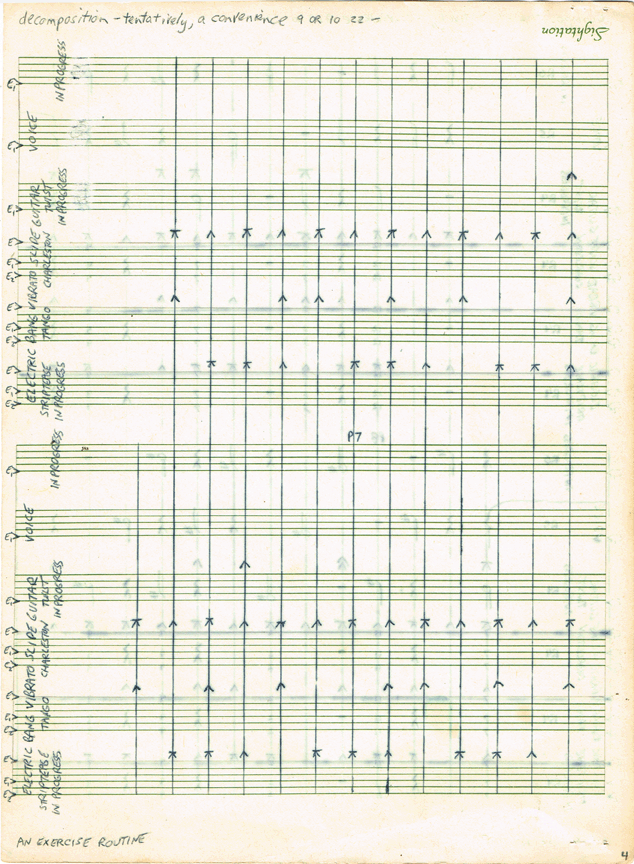
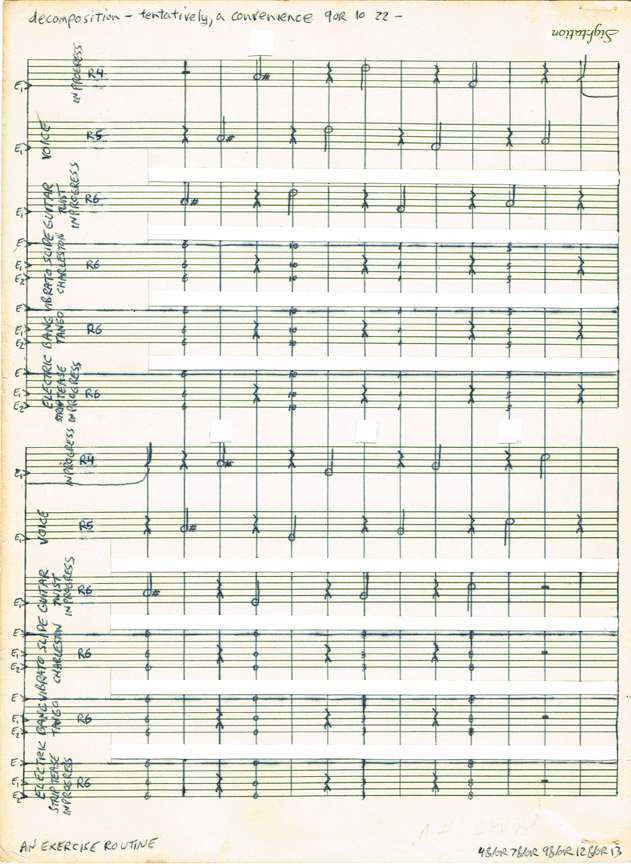


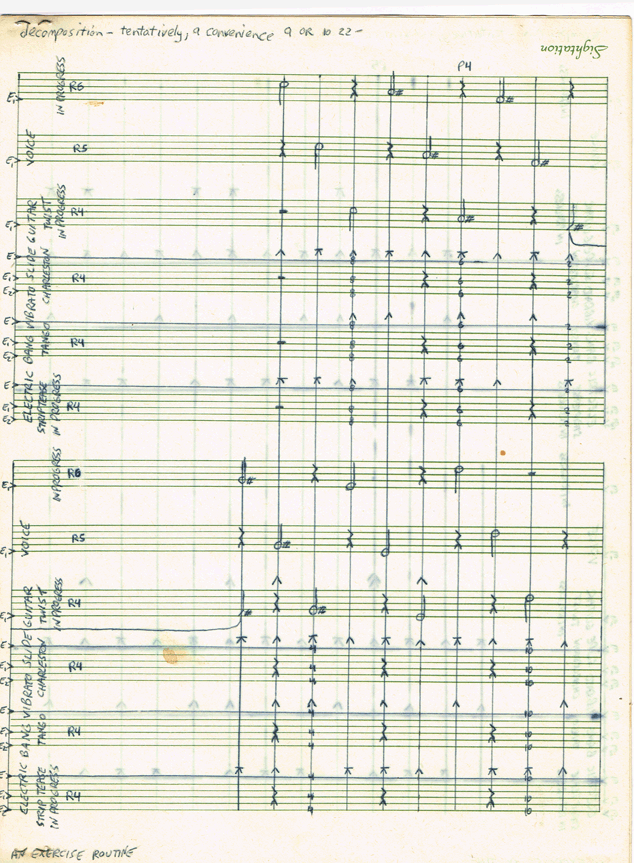
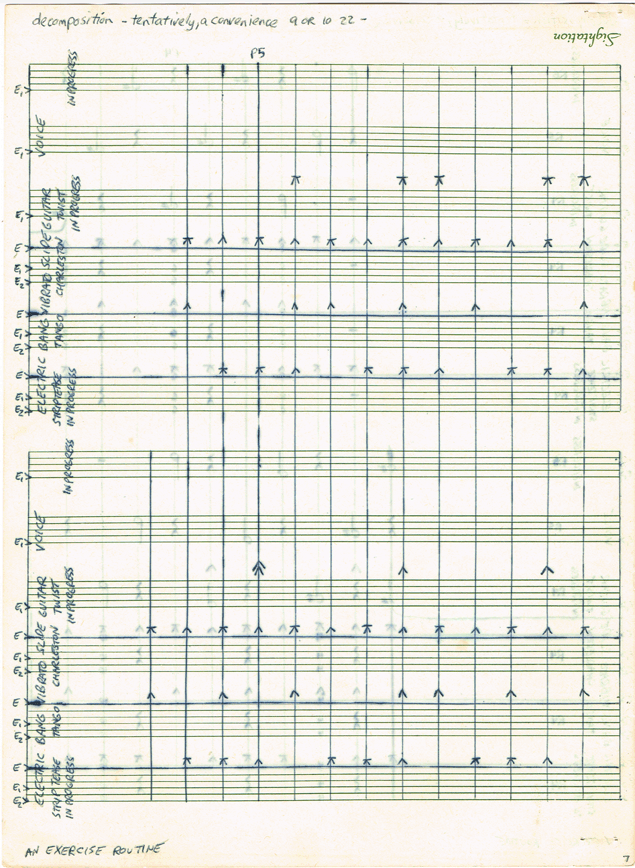
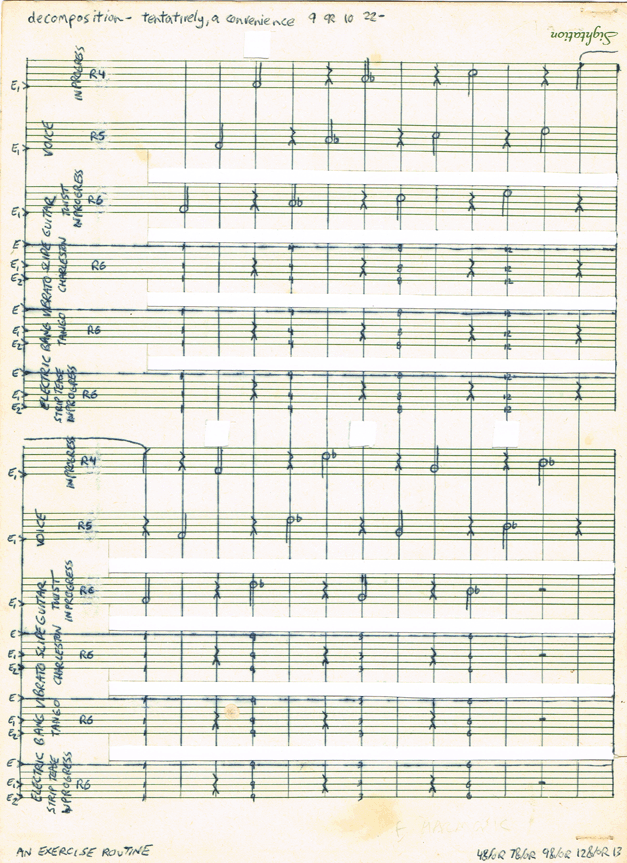

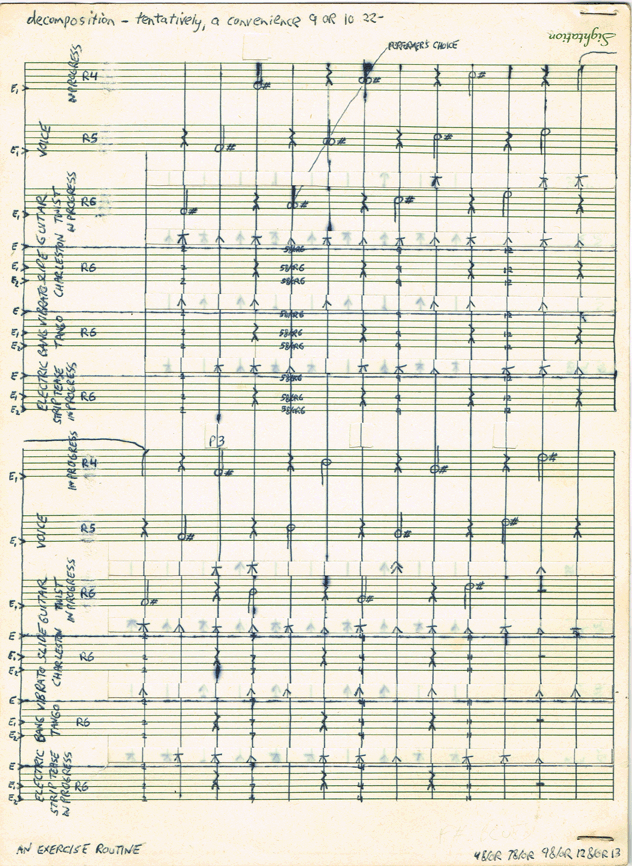

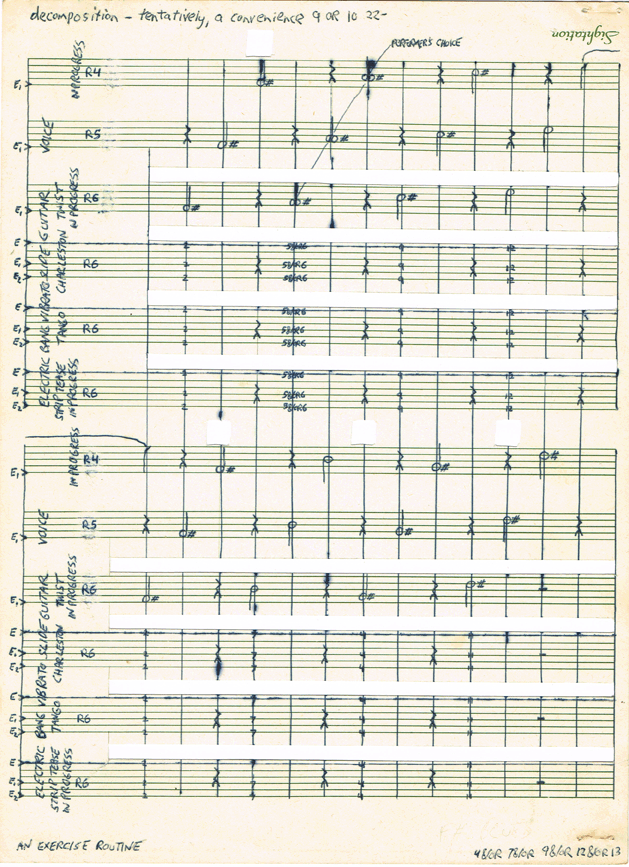
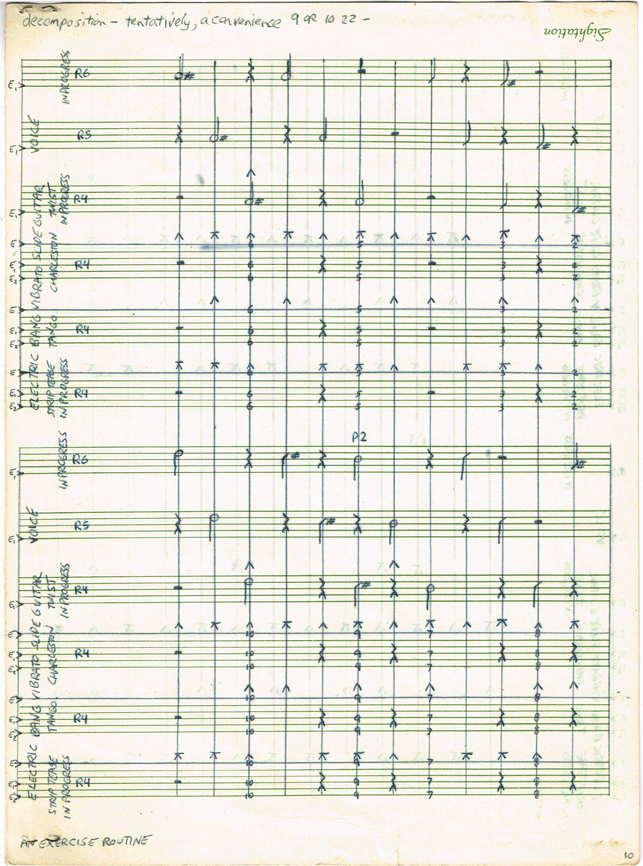


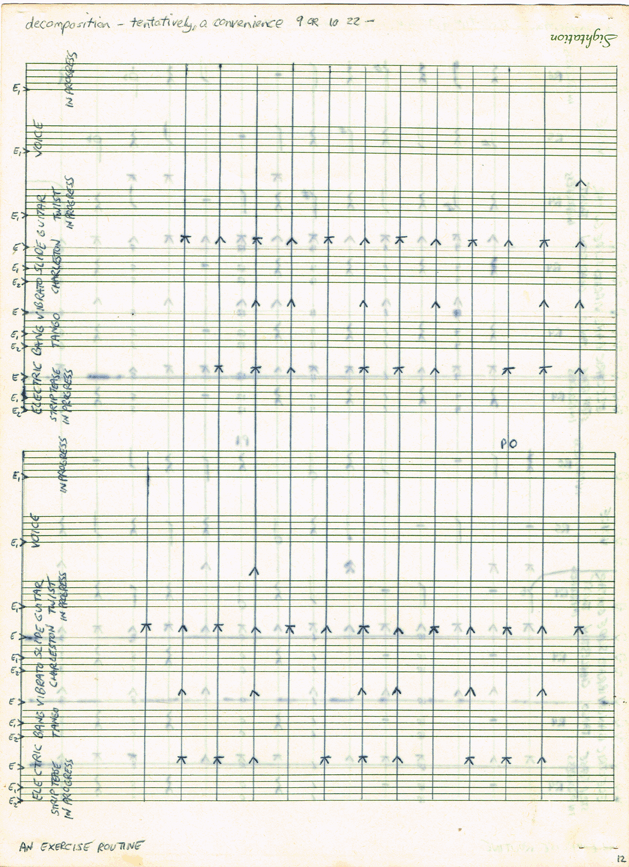
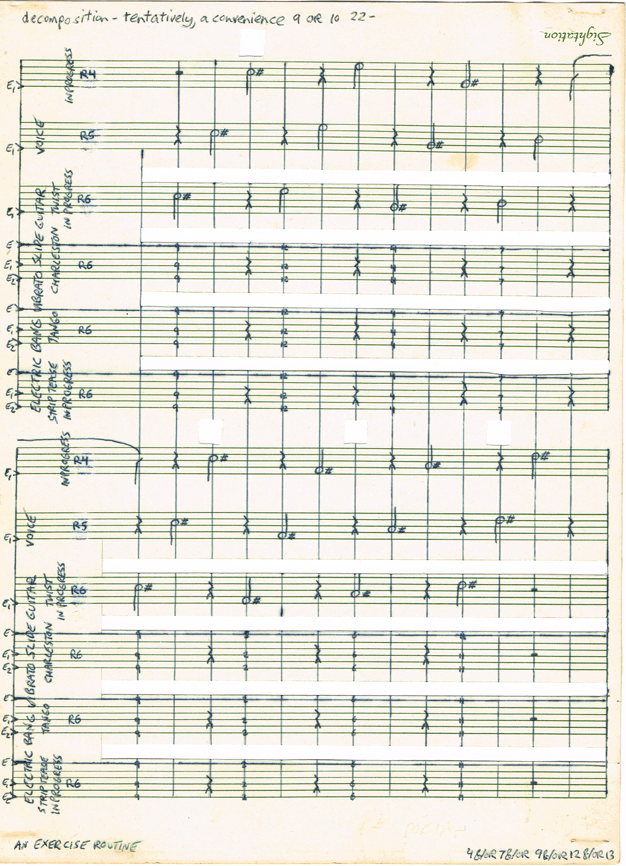
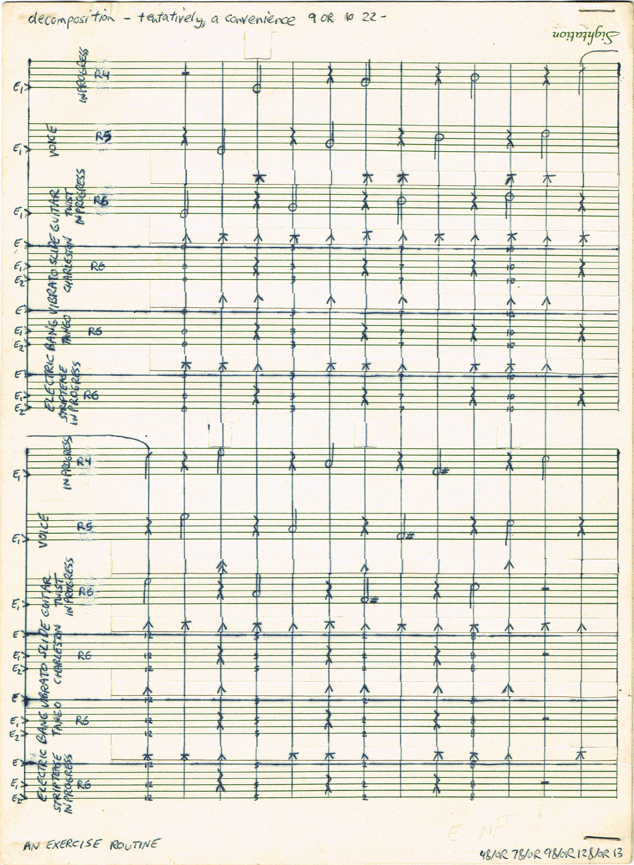
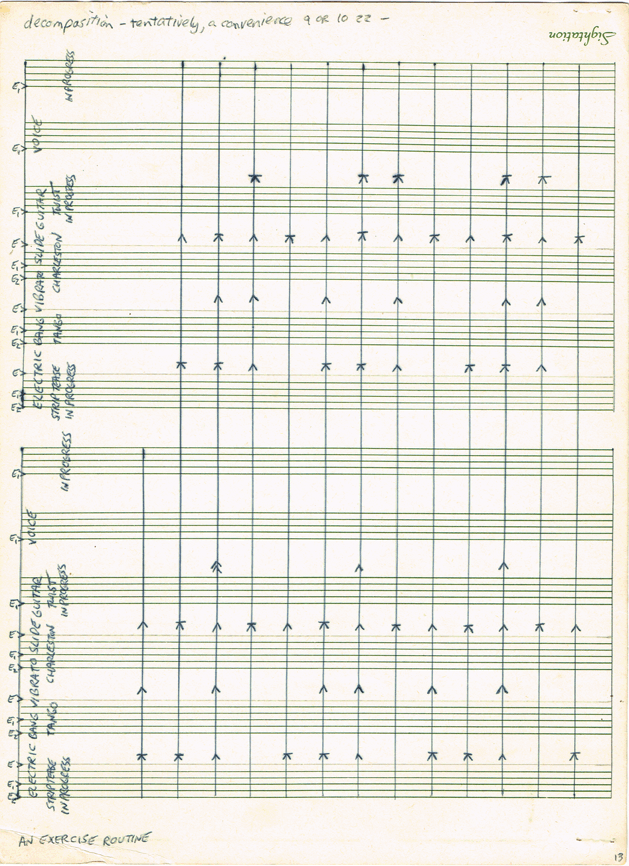
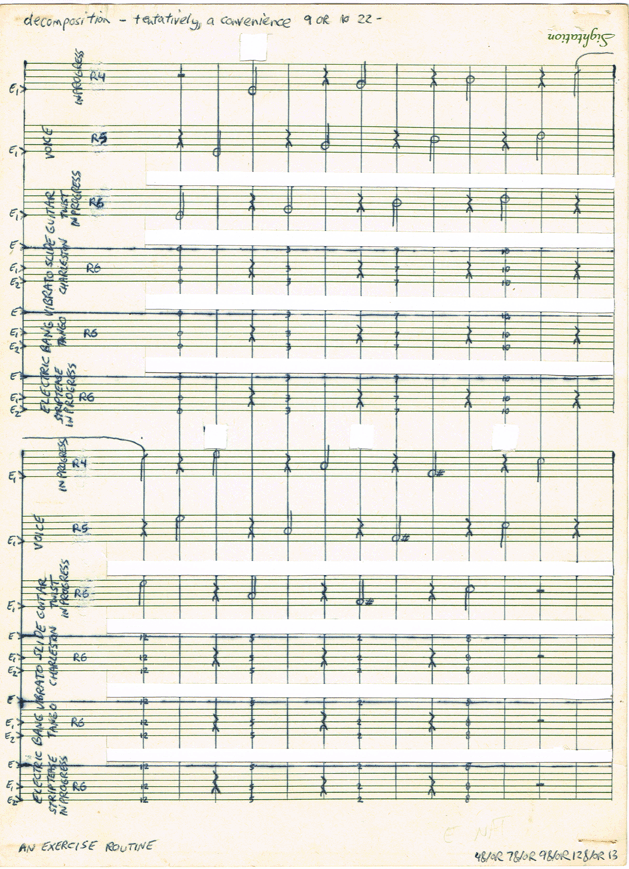


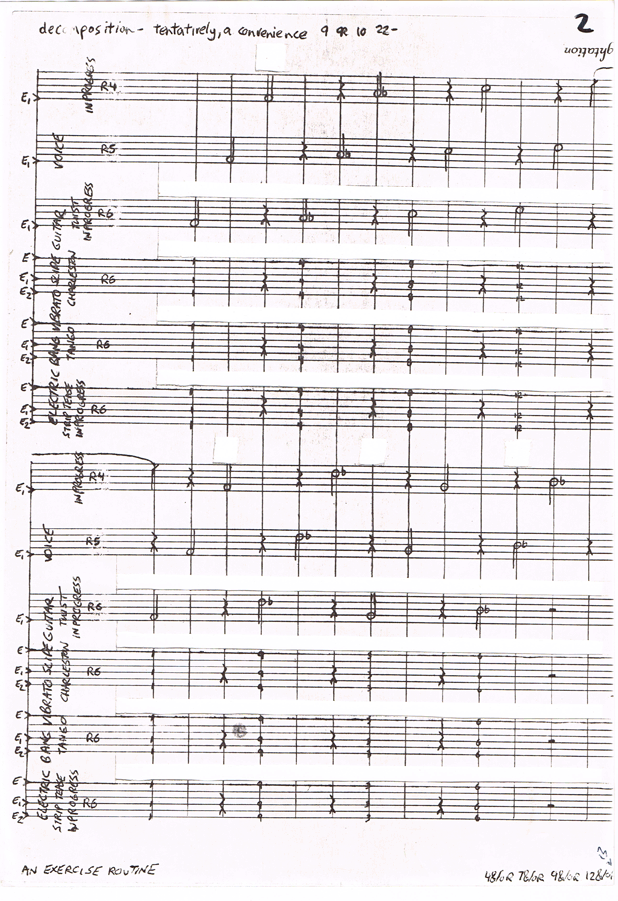

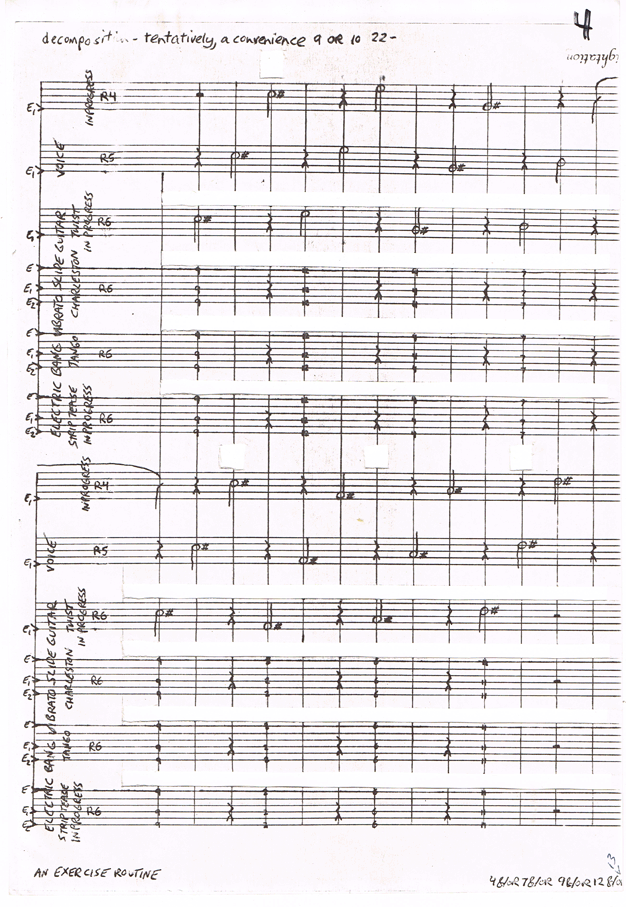
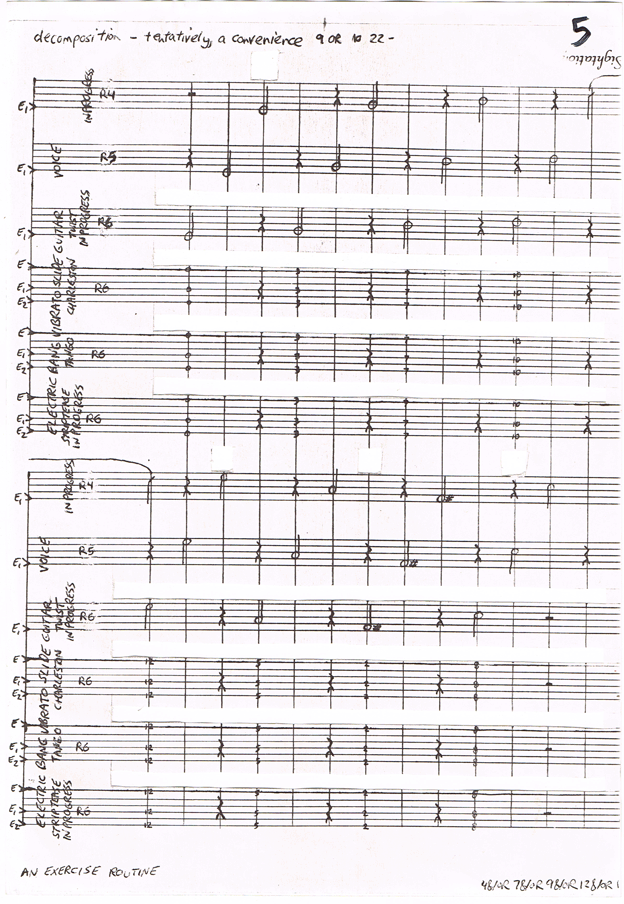
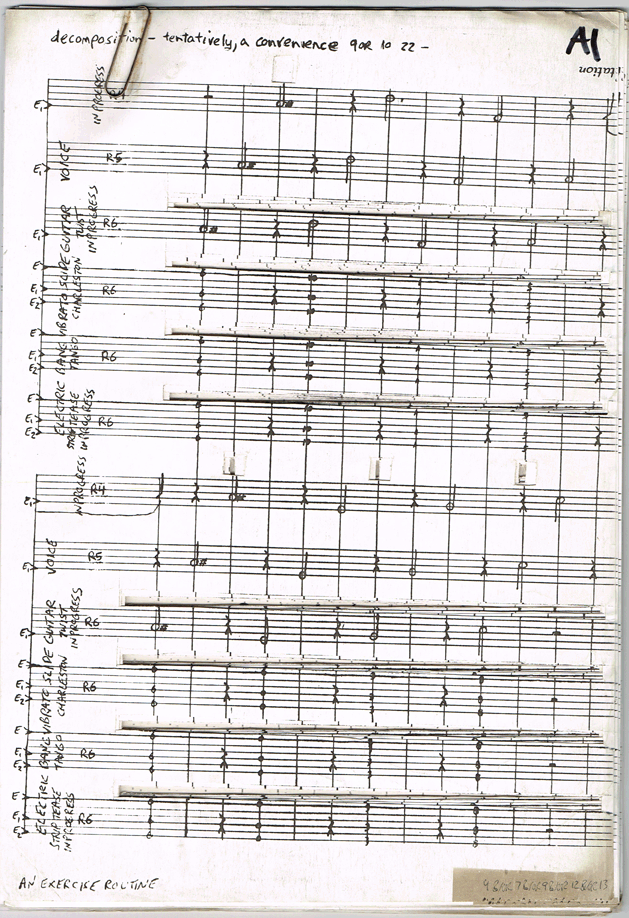


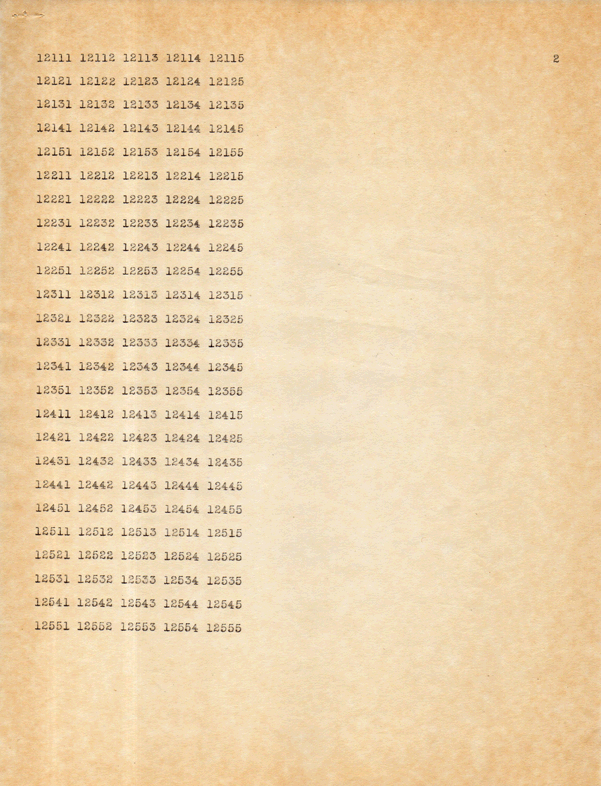


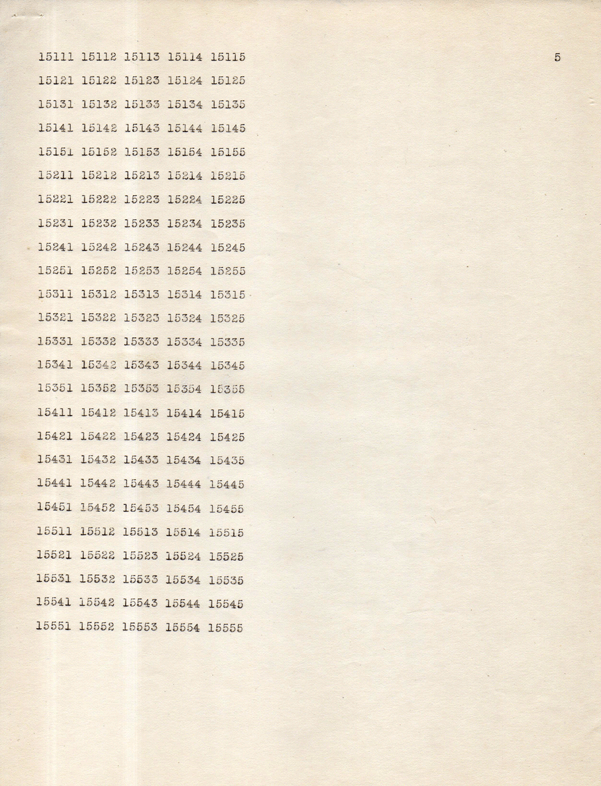
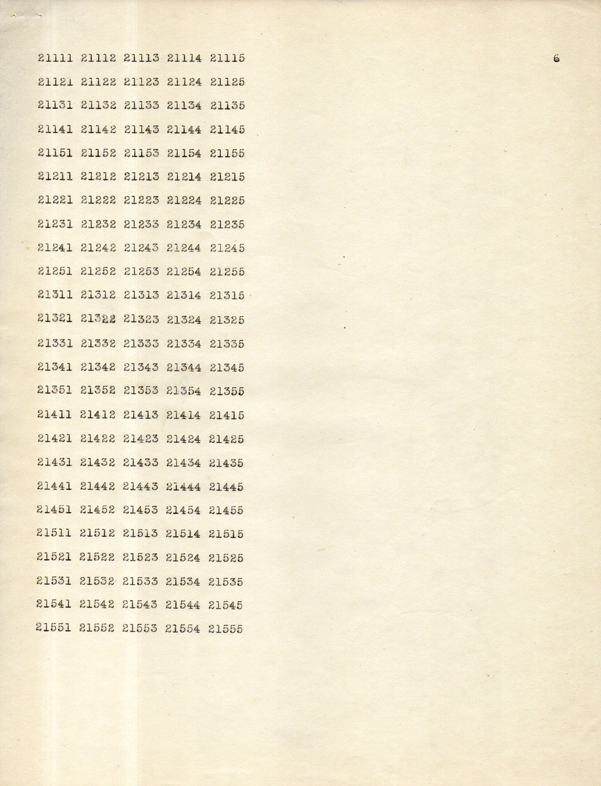
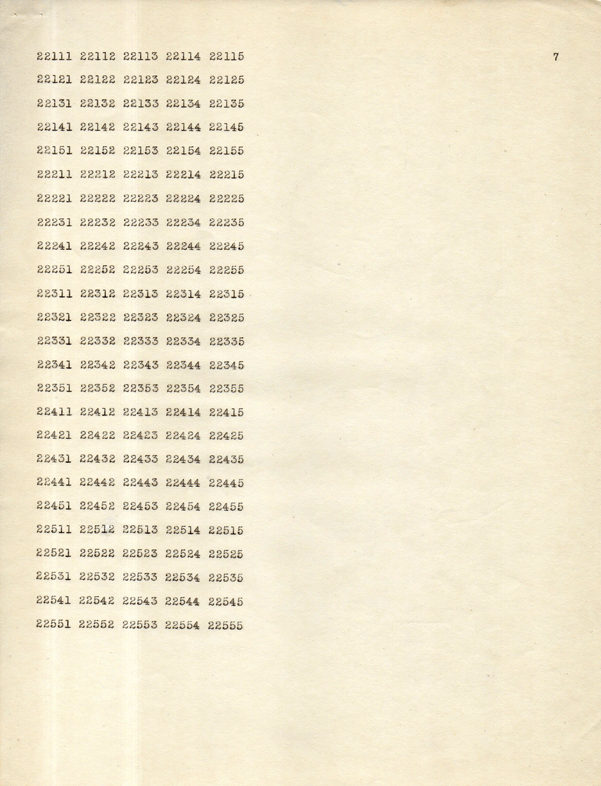
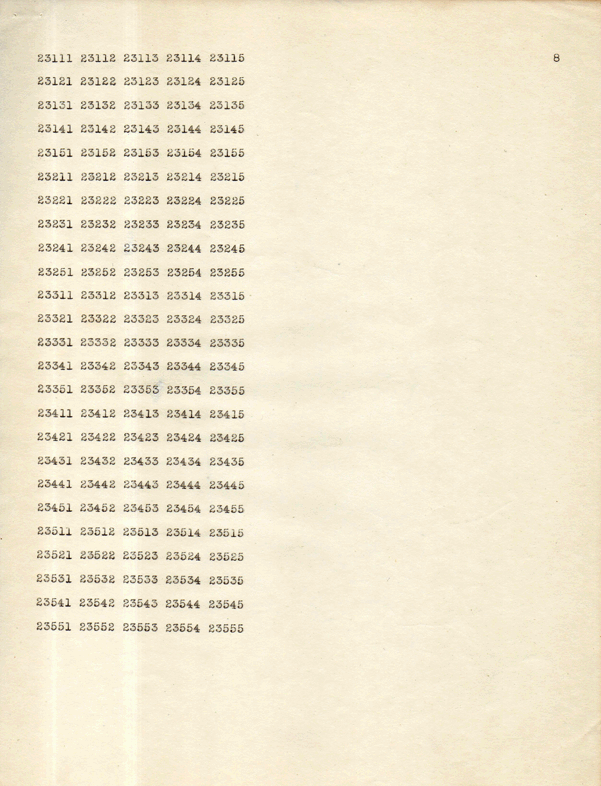
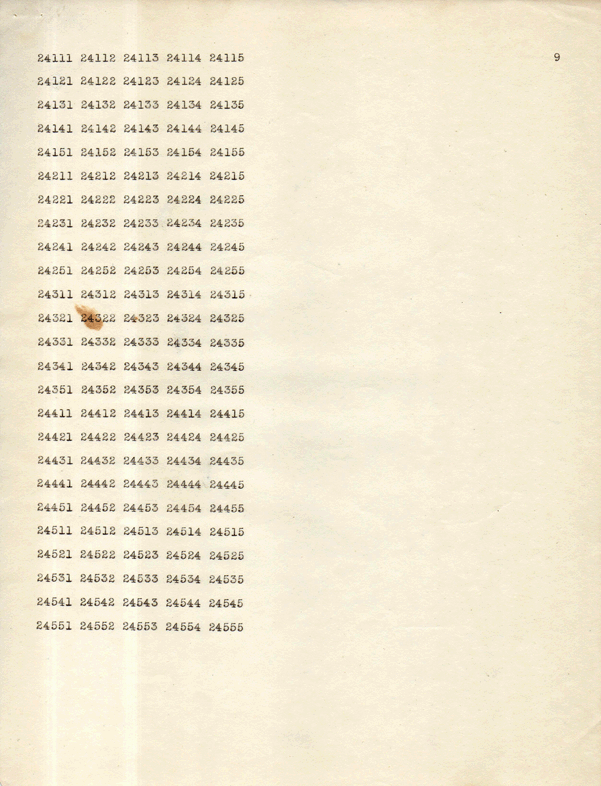
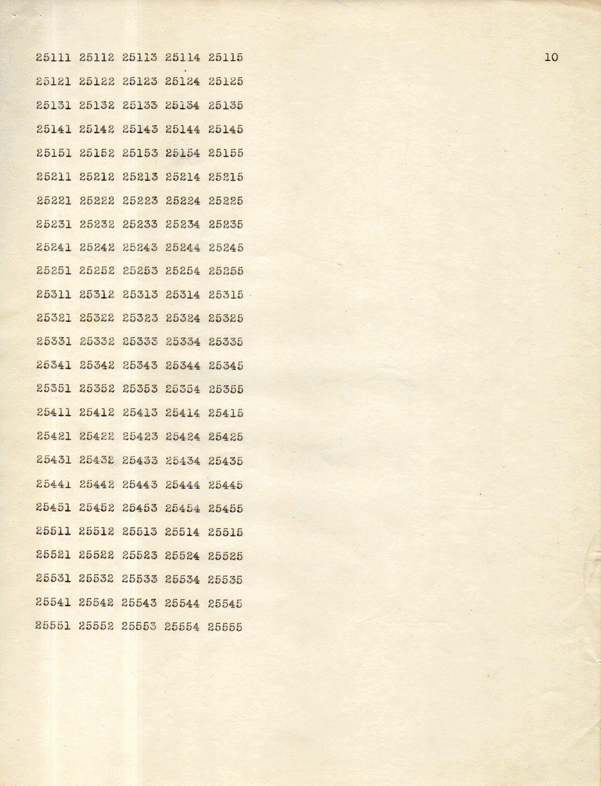
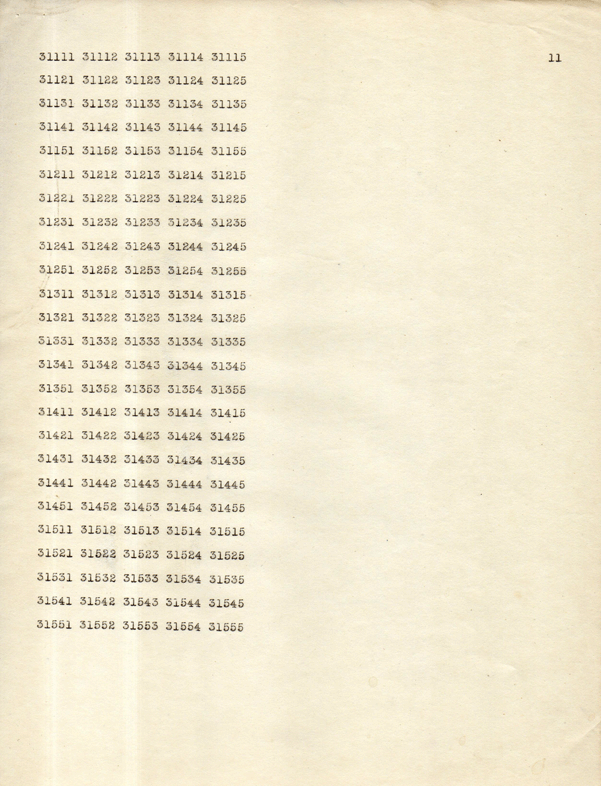
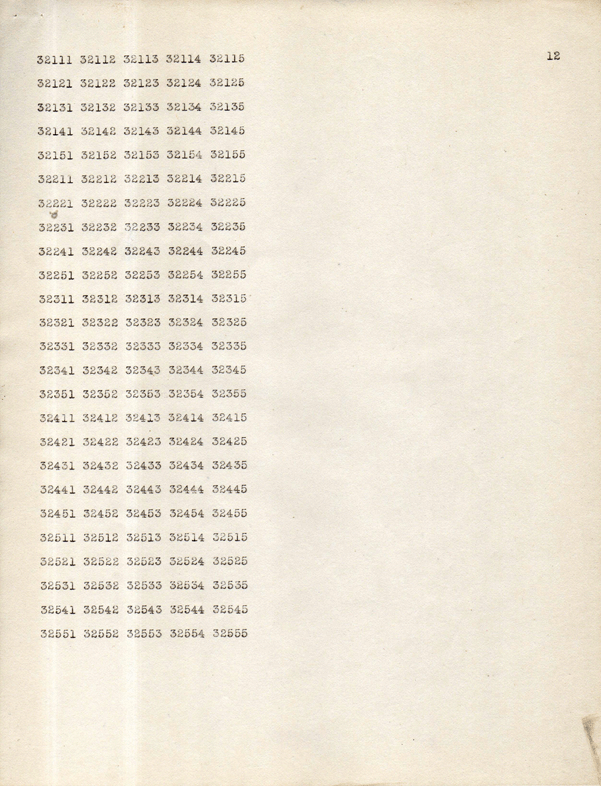
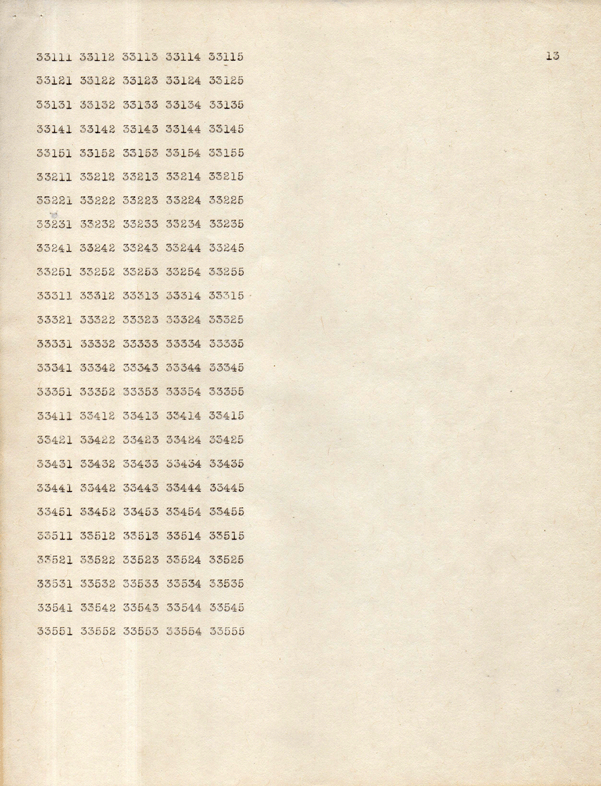
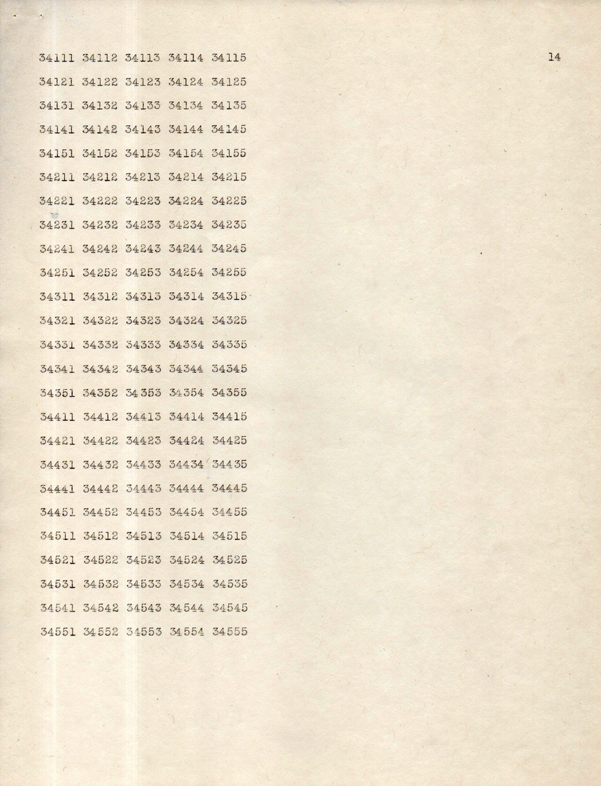
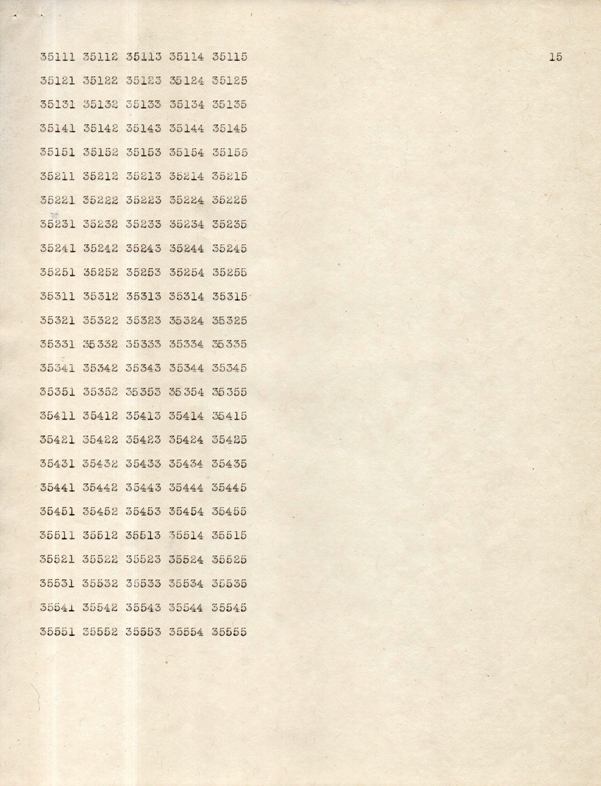

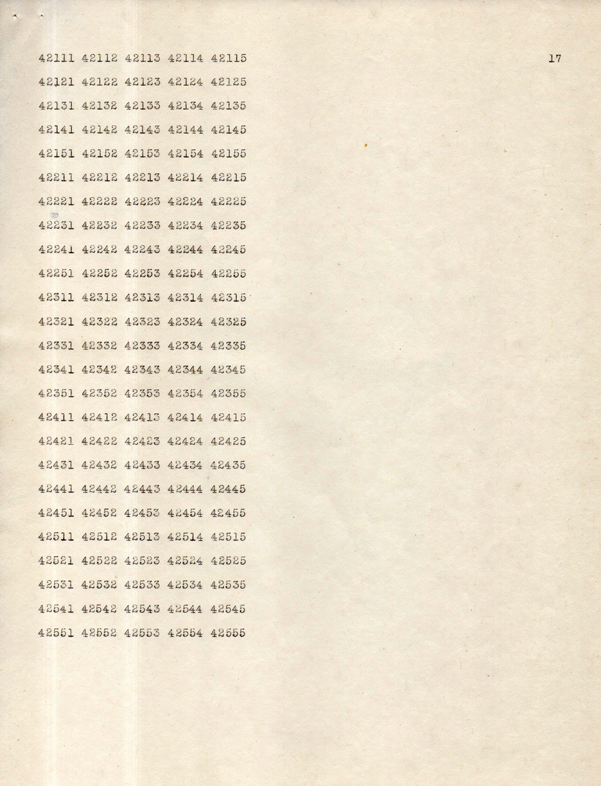
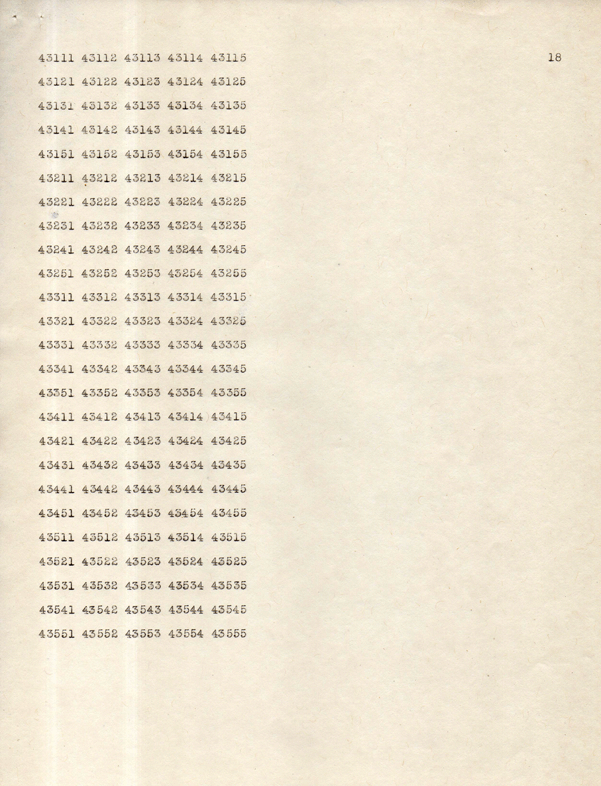
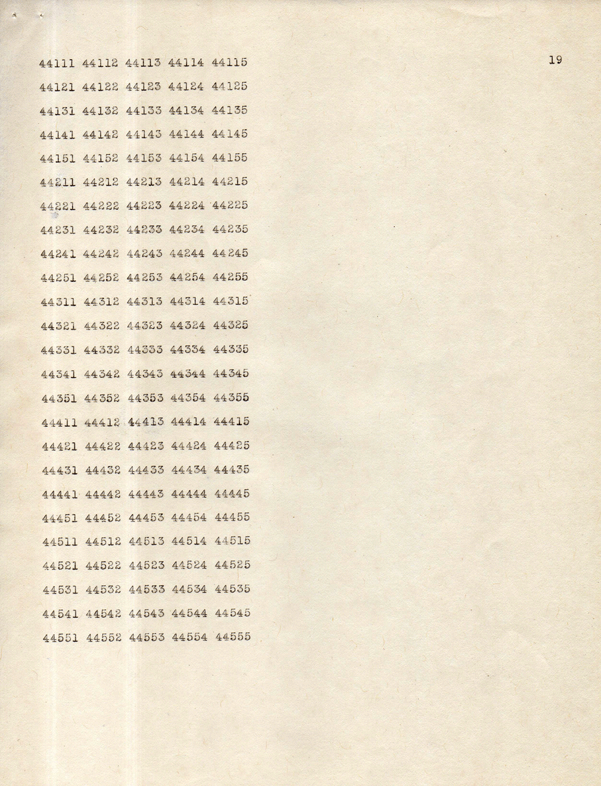
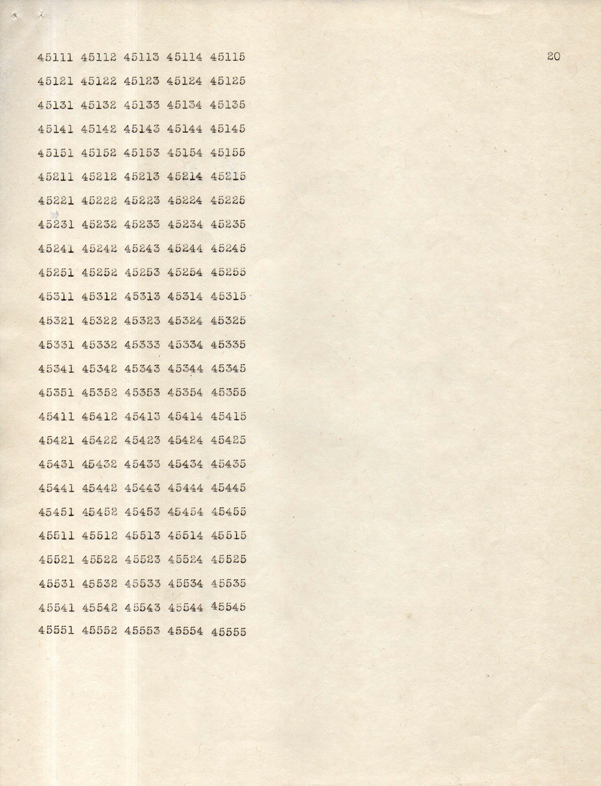
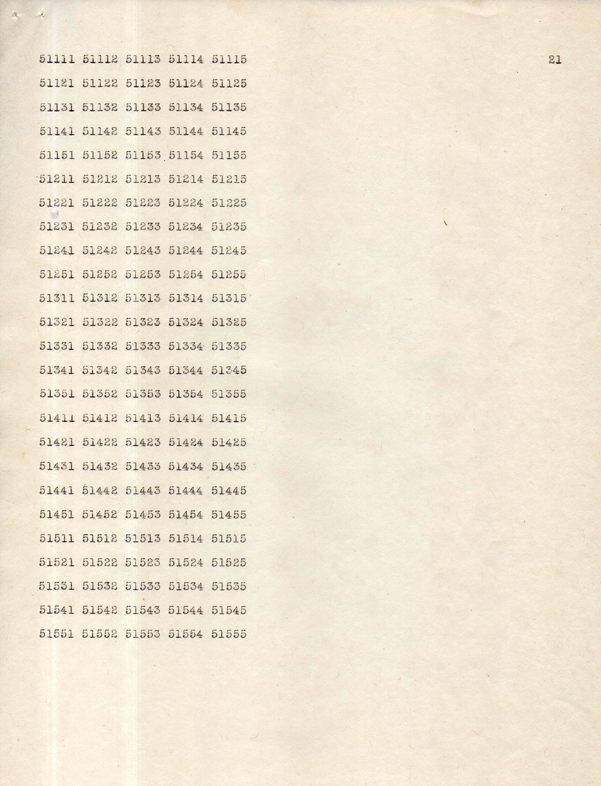
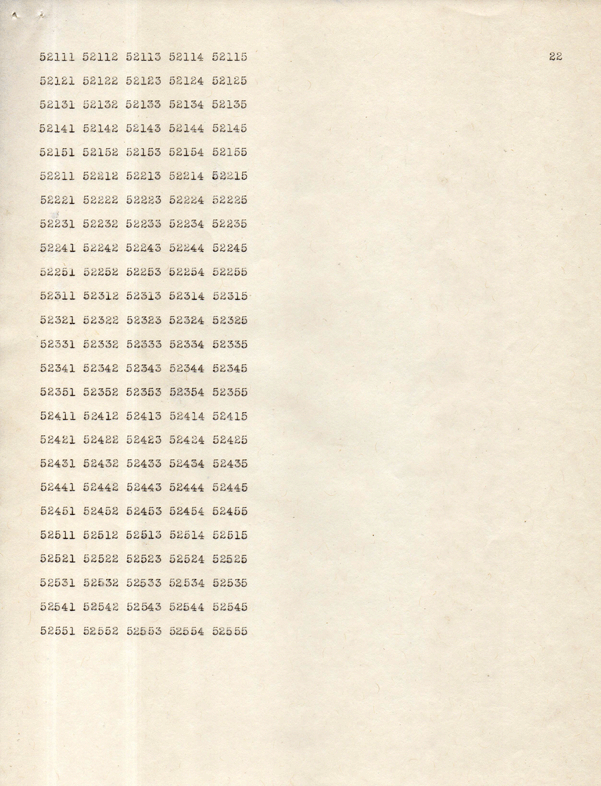
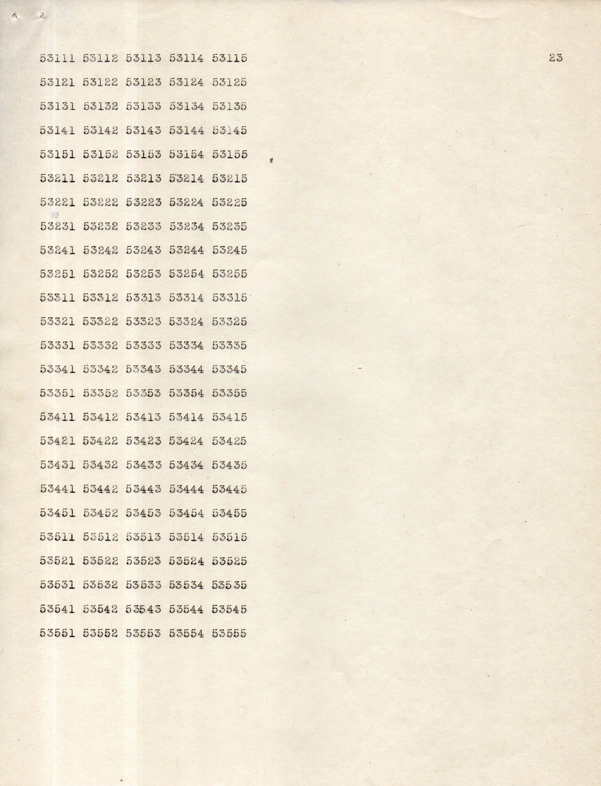
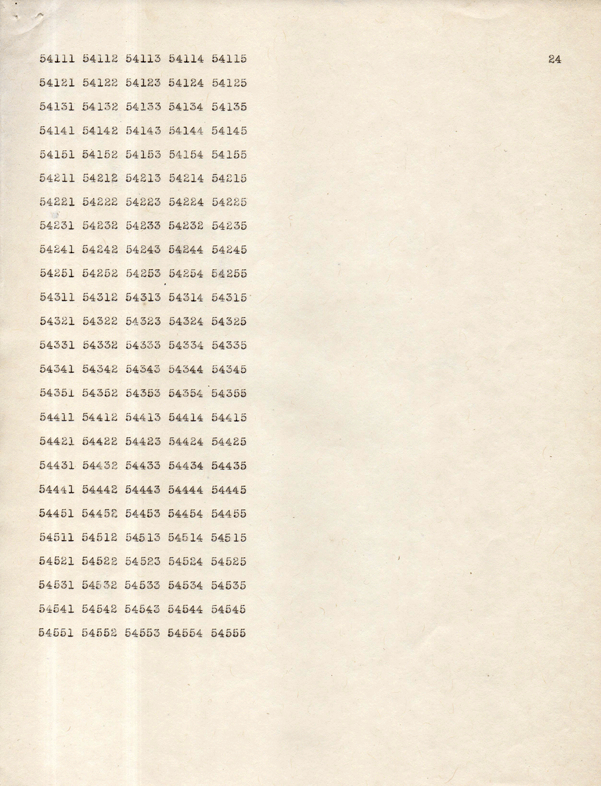
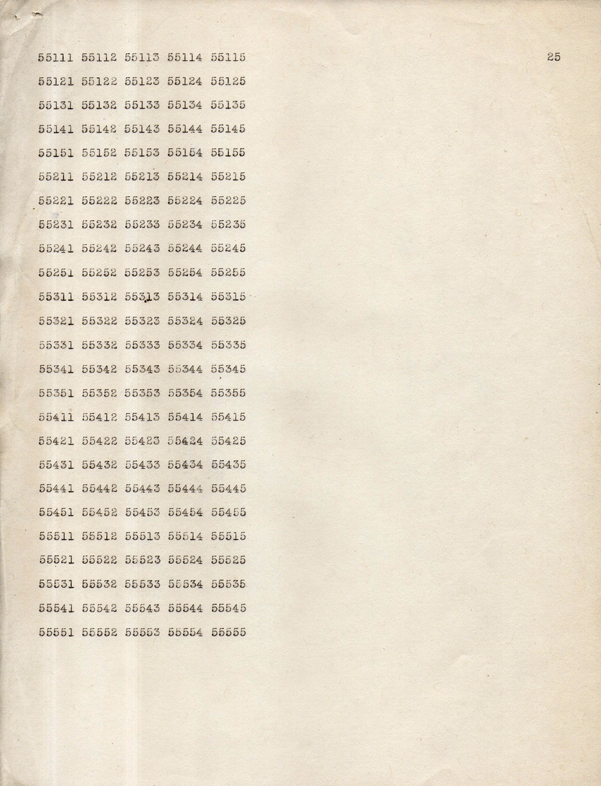
idioideo at verizon dot net
to the tENTATIVELY, a cONVENIENCE (d) compositions index
to the tENTATIVELY, a cONVENIENCE Audiography page
to the tENTATIVELY, a cONVENIENCE as Interviewee page
to the tENTATIVELY, a cONVENIENCE as Interviewer index
to the tENTATIVELY, a cONVENIENCE movie-making "Press: Criticism, Interviews, Reviews" home-page
to the "tENTATIVELY, a cONVENIENCE - Sprocket Scientist" home-page
to the "FLICKER" home-page for the alternative cinematic experience
to find out more about why the S.P.C.S.M.E.F. (Society for the Prevention of Cruelty to Sea Monkeys by Experimental Filmmakers) is so important
for info on tENTATIVELY, a cONVENIENCE's tape/CD publishing label: WIdémoUTH
to see an underdeveloped site re the N.A.A.M.C.P. (National Association for the Advancement of Multi-Colored Peoples)